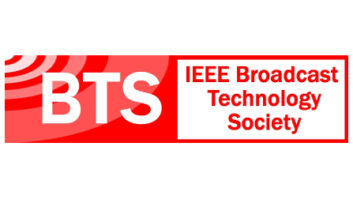�One of the troubling aspects of modern life is that attention has been shattered into smaller and smaller pieces.� � James Taylor, June 2015 issue of Hemispheres
Traditional broadcasters have social media envy.
Not that any sane person would trade a thriving broadcast enterprise and license for some local social media/Internet marketing concern.
However, there is great fear that the wolf is at the door and that the competition will somehow more effectively connect with our audience and steal our advertisers, or maybe we�ll miss a ride on some magic social media rocket that will change everything overnight.
iStockphoto/� boygovideo The social media grass that is greener is a business where 0.001 percent of college dropouts create media giants that have market caps in the billions. It�s the space where 140-characters topple empires, billionaires are made, where the very way we think is changed, where we meet and mate, where we find ourselves, our careers, our friends and our frenemies.

Yet social media is far more impermanent than a spectrum license.
MYSPACE�S RISE AND FALL
For example, next to Myspace, the erosion of AM radio has occurred in ultra-slow motion. In 2006, Myspace beat out Google for the title of the most visited site in the country. News Corp. had just bought it the year before for $580 million. Four years ago, Justin Timberlake and Specific Media Group acquired what was left for $35 million. As of February, the site was the 1,296th most popular site in this country, and 1,594th in the world, falling deeply into the noise floor.
The social media grass has been grazed to the rock. Social media has raised the noise level for all media and fragmented our attention and audiences. It�s the world where 90 percent of our station�s mind share is on �digital,� where we might make 10 percent of our revenue. It�s where frequency outstrips reach so dramatically that it�s hard to justify the �broad� in broadcast electronic media. Social media competes with electronic media. Every person who turns to their smartphone or computer instead of a radio or TV is a loss for electronic media.
IF YOU CAN�T BEAT �EM �
For the most part, broadcasters and print publications have opted to defect to the winning side.
The print world is shifting its business plan � selling access and advertising not so much to a physical medium, but to Web pages.
Broadcasters, on the other hand, are using their cash flow to chase social media to supplement their businesses. It�s like getting a power increase or simulcasting: More reach, cheap marketing.
Consider this, though: When your audience gives a station a preset, they make a long-term choice. Earning a preset is a difficult task. �Following� on social media or loading an app might be a choice, but it�s one that soon gets forgotten and eventually cleaned up along with the rest of the garbage that got sampled or slammed onto the desktops and devices. A radio preset is a destination, whereas an icon is a sometime-convenience in a field of noise.
�Shannon�s theorem is still spot-on: Noise is the enemy of communication. In the social media space, curation and filters address the noise obstruction. Half the pages on the Web have no original content at all � they simply curate links to the half that does. The cheapest show we broadcasters can produce is one where interns scour the Web for cat videos, crash videos, opinions and jokes to stitch together and broadcast.
For the last decade, broadcasters have looked for that digital business plan. More channels, sub-channels, IP channels, social media channels and efforts to crank out more and more content, often with less and less substance � fragmenting our audience�s attention � and that of our personnel � into smaller and smaller pieces.
Maybe the value of broadcasting comes from the �broad.� Just being �casters� might not be that great of a business plan.
Sometimes more is just noise � punch that broadcast preset and the noise goes away. Maybe that�s why TSL beats browsing time and average TV viewing time has grown to five hours.
The Wandering Engineer is an industry stalwart who has been in broadcasting since the days of Marconi and Tesla. He gives his thoughts on the current state of broadcast engineering and the broadcast engineer.











